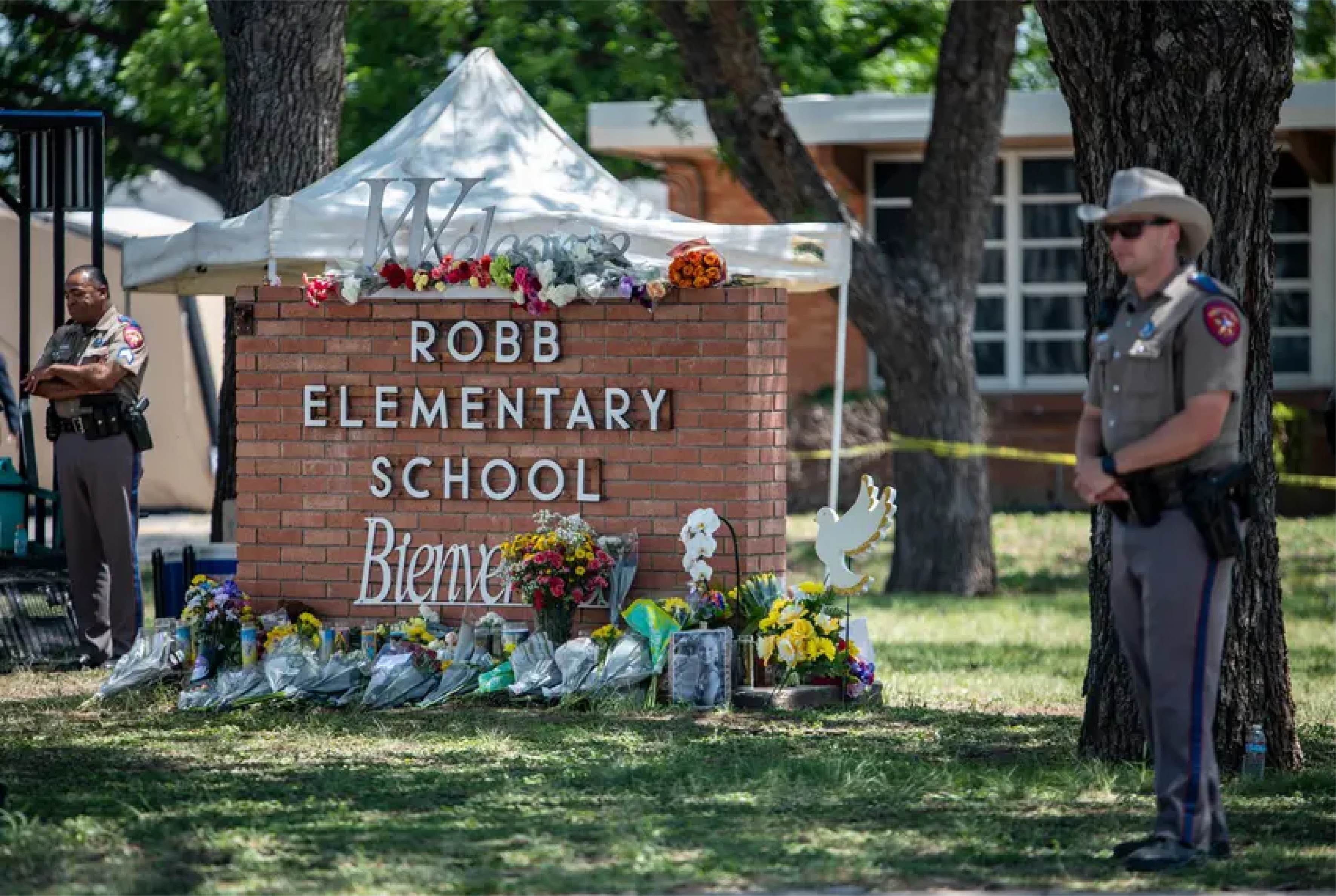Part I of II - Crisis in Plain Sight: Robb Elementary Shooting Reveals that In-Building Public Safety Radio Coverage was "Mostly Ineffective""Upon entering the building, the officers tried but were unable to communicate on their radios."
By John Foley, SBC Managing Director Posted on July 28, 2022
We of the Safer Buildings Coalition mourn with the Uvalde community the tragic loss of life resulting from the assault on Robb Elementary School on May 25th. While it is the role of many to find every solution that could make our schools safer, it is the role of the SBC to examine whether public safety communications may have been a factor in such an incident, and how we might work to improve such problems wherever possible.
The Interim report of the Investigative Committee on the Robb Elementary Shooting of the Texas House of Representatives found that Robb Elementary “did not adequately prepare for the risk of an armed intruder on campus.” “Upon entering the building, the officers tried but were unable to communicate on their radios.”
In today’s world, it’s simply unacceptable to have people inside buildings unable to communicate with each other during an emergency.
In Part I of a two-part series, Safer Buildings Coalition examines a crucial element of this tragedy: Poor in-building public safety coverage. In Part II, next month, the Safer Buildings Coalition will examine:
Some key outtakes from the Texas House of Representatives report: Uvalde Robb Shooting Report - Download HERE
Other Observations from Press Reports:
Some Observations from SBC
It is clear that poor in-building communications for public safety radios played a key part in hampering police capabilities. In-Building Communications are Critical to Public Safety, and to the Safety of the Public.
We frequently talk about the most valuable asset in an emergency: Time. The FCC estimates that a one-minute improvement in 9-1-1 response time would save 10,000 live per year. In the case of Uvalde, it took 71 precious minutes to begin treating the wounded. Callers must be quickly and accurately located.
While the area LMR system did not penetrate the building walls, cell communications (in some cases from trapped children) provided critical information about the situation and location of victims. Mobile Calls to 9-1-1 must work. Cell Communications are a public safety necessity.
In-Building Public Safety Communications Coverage is required by Fire and Building CodesIt is clear that poor in-building coverage is a public safety crisis in plain sight. Since 2009, the International Fire Code has required that buildings be assessed for inadequate public safety radio coverage, and where poor coverage exists, it must be corrected.
These standards have been updated and strengthened in every code cycle since, found in NFPA 1, 72, 1221, 1225 and the International Fire and Building Codes.
While the codes do not prescribe a specific technology solution for poor in-building coverage, they have quite a bit to say about the most common solution: Emergency Responder Communications Enhancement Systems (ERCES). When these systems are deployed, they must conform to all FCC rules and regulations, as well as fire and building codes and standards that describe the correct way to design, install, monitor and maintain them.
Clark County, NV, took action after One October Mandalay Bay Mass Shooting
October 1, 2017, a shooter opened fire on the crowd attending the Route 91 Harvest music festival on the Las Vegas Strip in Nevada. From a 32nd-floor suite in the Mandalay Bay hotel, the shooter fired more than 1,000 bullets, killing 60 people and wounding at least 413. The ensuing panic brought the total number of injured to approximately 867. Quoting the 1 October After Action Report: “As SWAT officers arrived and entered the property, their communications failed, and radios were rendered ineffective without a line of sight.”
In response, the Clark County Fire Chief at that time, Chief Gregg Cassell, sent a letter to all Las Vegas high-rise hotels and casinos requiring that they undertake radio coverage assessments. As a result, many properties have already installed in-building signal booster systems that correct poor coverage.
School Systems Nationwide are Deploying In-Building Public Safety Coverage Enhancement Systems
Institutions of higher learning and K-12 school systems across the country have been very active in evaluating their buildings, and where deficiencies are found, systems are installed to make the buildings safer.
Some examples of school districts known to be deploying solutions: Harris County, TX, Knox County, TN, Orange County, FL, Hillsborough County, FL, Shawnee Mission School District, KS, Kipp Schools, TX, and many others. According to industry reports, thousands of such systems have been deployed.
In the State of Michigan, House Bill No. 5561 proposes to install such solutions in K-12 schools.
Taking a Position: Buildings with poor wireless connectivity are unacceptable. Especially when they are schools.All buildings should be evaluated for adequate in-building communications coverage, and where “wireless dead zones” exist, they should be corrected. This is true not only for public safety push-to-talk radios, but also for cellular communications.
We no longer live in a tethered communications reality. We are fully in the tetherless, wireless world. It is time that public policy and public expectations align with this reality, and buildings lacking adequate indoor wireless coverage should be relegated to the ranks of buildings without running water.
Building owners, building operators, public safety officials, radio system operators, and industry must work together to solve for one of the key areas where together we can truly make a difference. Every life is precious. But there is no disputing that mass school shootings are another level of evil. Not only are schools more often the target of these mass shootings, but the young victims lose a lifetime of years, devastating families and communities for generations. We must prioritize solving for wireless dead zones inside schools immediately.
The Three Pillars of Public Safety Communications remain:
A Call to Action: WHAT DO YOU THINK?
Have an idea or a comment on what should be done next? Are you aware of grant or funding opportunities? Tell us! Contact Us Using the Subject Line: Comment on Uvalde
Tell Us What you Think! Click Here
|


